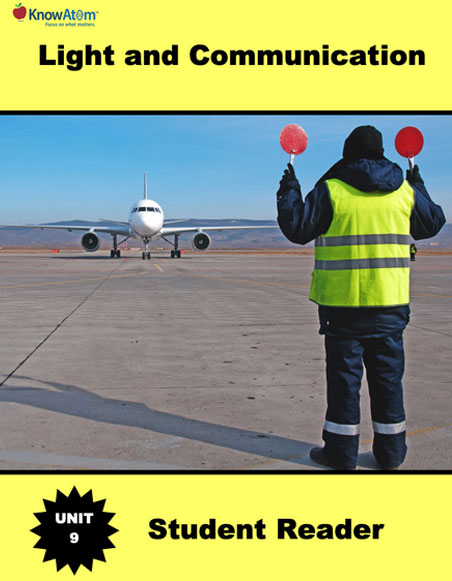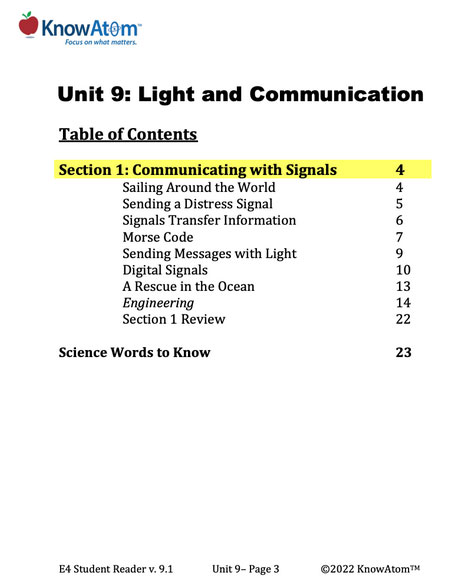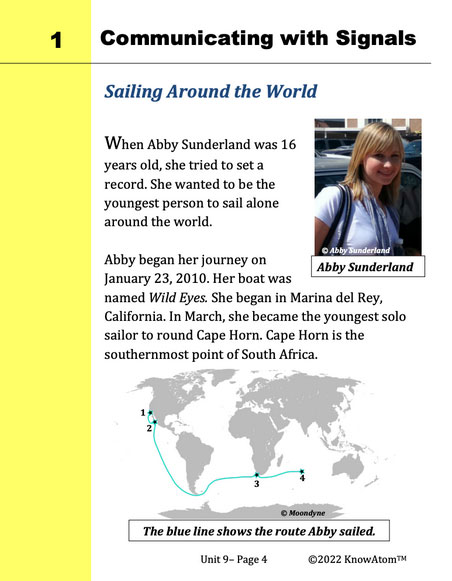The science background section gives teachers more in-depth information about the phenomena students explore in this unit on light and communication.
Many signals use patterns (things that happen in a regular and repeated way) to transfer information from one place to another. For example, if you send three of any signal, it means you need help. This includes blowing three short times into a whistle or turning a flashlight on and off quickly three times.
Three whistle sounds or three flashes of light are codes because they are messages communicated with a pattern of information (symbols, letters, words, sound, light, etc.). Using a code is a way to communicate with people over a long distance, and both sound and light can be used to send coded signals. Like sound, light is a form of kinetic energy that travels through space. However, unlike sound, light doesn’t need a medium to travel and can travel through a vacuum, which is space with no matter.
All light needs a source, such as the sun, a flashlight, or a signal lamp. Light travels outward from its source through space in a straight line until it interacts with matter. Almost all matter reflects some light. To reflect means to bounce off of the surface of an object. When light reflects off of an object and into our eyes, we see the object.There are different systems for communicating messages over a distance.
One of the longest-lasting systems is Morse code, which is a way of encoding text into a series of dots and dashes. To encode means to turn information into a format or code so it can be easily and/or securely transmitted. To transmit means to pass on from one place or person to another.
Once the information is received, it needs to be decoded. To decode means to turn coded information back into a form that can be understood. With Morse code, each letter of the alphabet and number is represented by a sequence of dots and dashes. The dots and dashes can be transmitted by pulses of light, on-off tones, or clicks of sound.
When it was first developed, Morse code was commonly used in telegraphs, allowing people to send messages through the sound of long and short clicks. Morse code was also useful for ships at sea to communicate with one another using large lights. Today there are many ways that people can communicate over great distances, but Morse code is still used in aviation and aeronautical fields. For example, the U.S. Navy and Coast Guard still communicate through Morse code with signal lamps. Air traffic control towers also use signal lamps that use Morse code as a backup in case a plane’s radio stops working.
In addition to Morse code, both light and sound are commonly used in more high-tech communication systems. In a high-tech device such as a cell phone, the information is encoded digitally before it can be transmitted over a long distance. In any digital technology, information is translated into a countable set of numbers, most often ones and zeroes.
Morse code is a good way to understand how information can be turned into a digital code. People often call Morse code the first digital code because it has two states: a dot and a dash. Both Morse code and digital code are binary, which means they use two symbols to represent text. Morse code uses dots and dashes to represent letters of the alphabet, while digital code uses ones and zeroes.
Different kinds of information can be represented digitally. Your computer turns letters into codes of ones and zeroes, with each letter represented by a pattern of ones and zeroes. Similarly, pulses of light or sound can be represented digitally. For example, a pulse on can be represented by one, and a pulse off can be represented by zero.
Think of a cell phone. When you speak into a cell phone, you produce sound that travels outward in sound waves from your mouth into the phone. Your phone then encodes those sounds by converting the sound waves into digital signals and then sends those signals to a cell phone tower through pulses of light (radio waves).Once the cell phone tower receives your signal, it sends it on to the phone of the person you’re talking to. Before that person can understand your message, it has to be decoded, converting the digital code back to sound waves that the person listening at the other end can hear.








